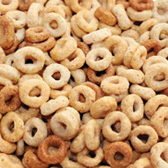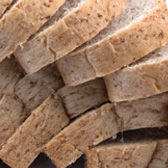
Coma bien
- ¡Coma al menos 3 veces al día para obtener la energía para cuidarse y cuidar a su familia!
- Consumir alimentos variados le da los nutrientes que necesita para mantenerse sana.
- Elija granos enteros como avena, arroz integral, y pan y pasta de trigo integral.
- Tome agua en lugar de bebidas endulzadas.
- Vea más consejos para comer de forma saludable en myplate.gov.
Actividad física
h3 hide
Estas son algunas ideas de actividades de intensidad moderada.
Pregunte a su proveedor de atención médica cuál es la mejor actividad física para usted.
Salud emocional
Es común sentir una mezcla de emociones después de tener un bebé. El parto y los cambios en las hormonas y los patrones de sueño pueden hacerla sentir triste. Las mamás primerizas pueden llorar con facilidad, tener problemas para comer o dormir, y sentir que es muy pesado cuidar a su bebé. Para aliviar estos sentimientos, coma bien, descanse mucho y pídales ayuda a sus familiares y amigos durante este tiempo.
Si se siente triste y molesta más de dos semanas o si tiene miedo de lastimarse o lastimar a su bebé, hable con su médico o con el personal del Special Supplemental Nutrition Program for Women, Infants, and Children (WIC, Programa Especial de Nutrición Suplementaria para Mujeres, Bebés y Niños). Tal vez tenga depresión posparto.
Consultas médicas de rutina
- Visite a su médico una vez al año.
- Esté al día con el calendario recomendado de vacunas.
- Pregúntele sobre opciones de planificación familiar que la apoyen con el amamantamiento y le garanticen el mejor plazo entre los embarazos para que se recupere del proceso de parto.
Ácido fólico





El ácido fólico debe estar en su cuerpo antes de embarazarse y durante el primer mes de su embarazo.
Amamantar es la mejor manera de alimentar a su bebé
- Los proveedores de atención médica recomiendan amamantar durante el primer año o más tiempo si usted lo decide así.
- La leche materna tiene todos los nutrientes necesarios para el crecimiento y el desarrollo.
- La leche materna ayuda al bebé a defenderse de infecciones y a enfermarse menos. El amamantamiento también ayuda a proteger la salud de la mamá.
- El amamantamiento es bueno para formar un vínculo con el bebé.
Evite el alcohol, el tabaco y las drogas
No fume, beba ni consuma drogas. Use los medicamentos según las indicaciones. Las cosas que haga hoy pueden afectar la salud de su familia en este momento y en el futuro.
Es difícil dejar el hábito. Pregunte al personal de WIC a dónde puede ir a solicitar ayuda. No está sola. Hay personas que pueden ayudarle a dejar el hábito, darle consejos y apoyarla en todo el proceso.